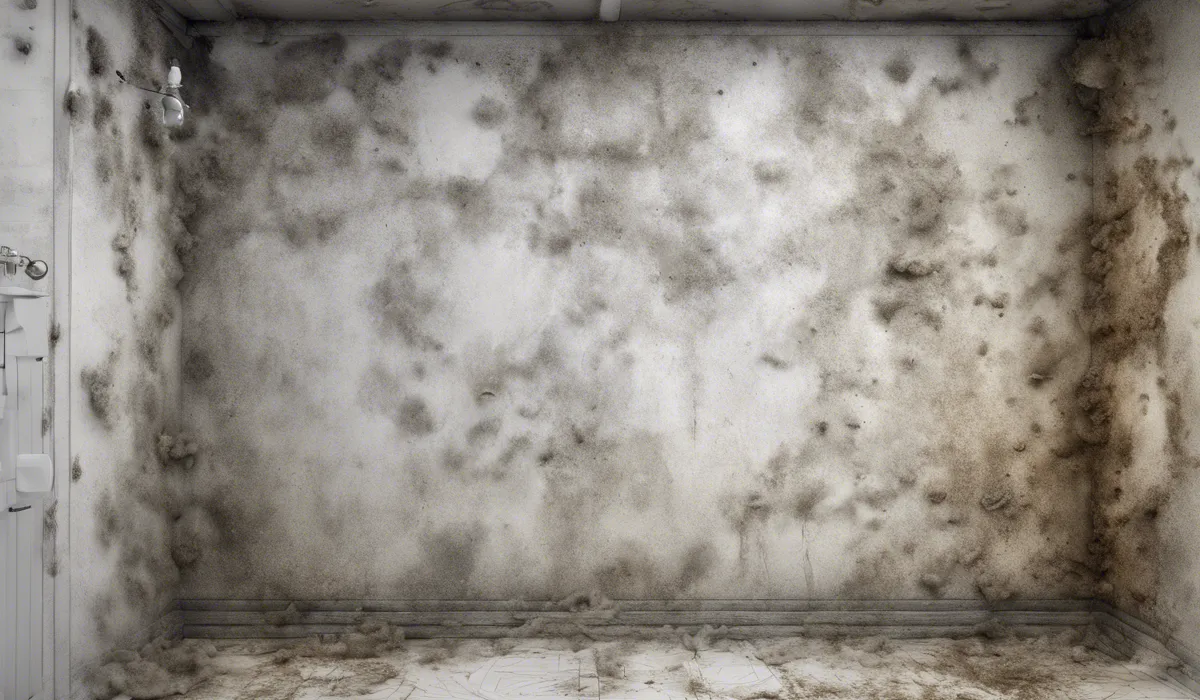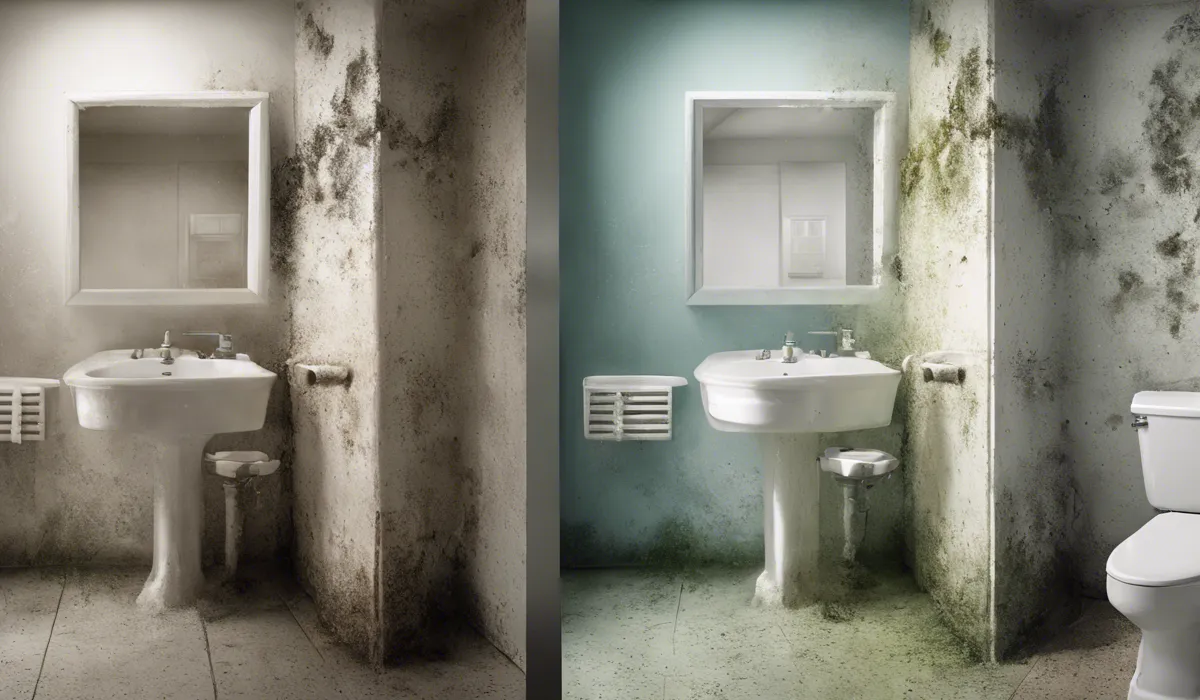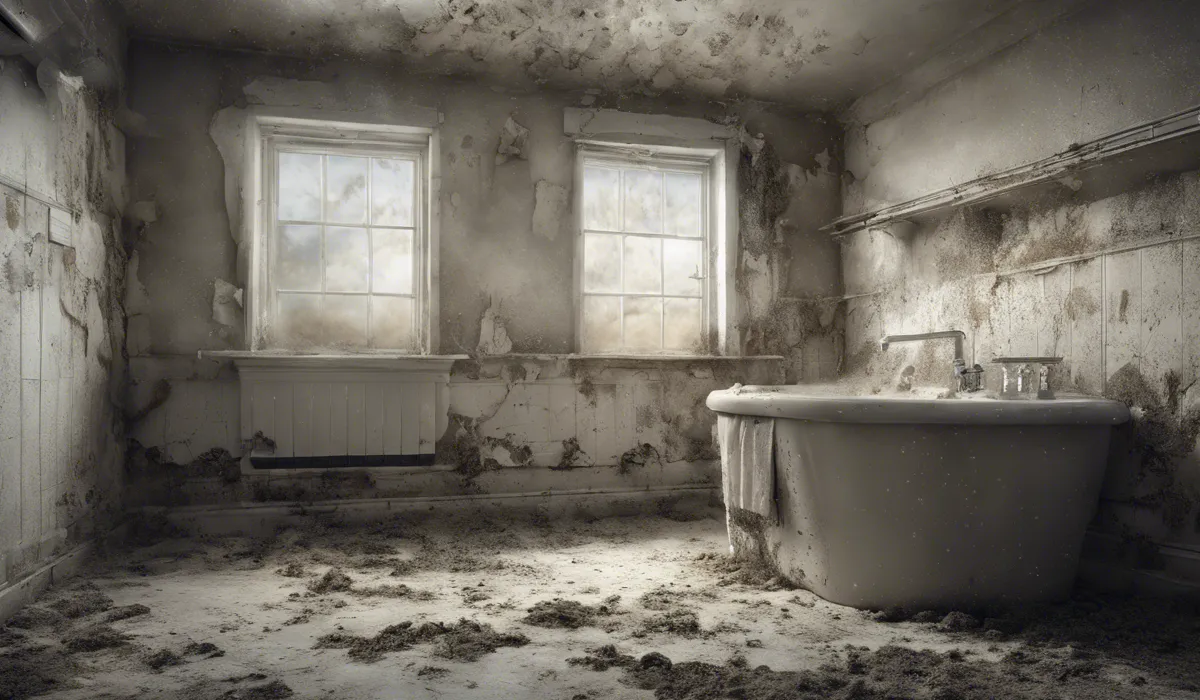Mold keeps coming back due to persistent moisture, lack of ventilation, and residual spores. To prevent recurrence, fix leaks, control humidity, and thoroughly clean affected areas.
Understanding Mold: The Basics

What Is Mold?
Mold is a type of fungus that plays a crucial role in nature by breaking down dead organic matter. However, when it grows indoors, it can cause health problems and damage to your home.
Mold reproduces through tiny spores that float in the air, and when they land on damp surfaces, they start to grow.
Common Household Molds
In homes, you might find several types of mold. The most common ones include Cladosporium, Penicillium, Aspergillus, and the infamous black mold, Stachybotrys chartarum.
Each type of mold can have different effects on your health and your home, so it’s important to identify and address them quickly.
Conditions for Mold Growth
Mold thrives in environments with moisture, warmth, and organic materials to feed on.
Places like damp basements, bathrooms, and kitchens offer perfect conditions for mold to grow. Controlling these factors is key to preventing and stopping mold infestations.
Spreading of Mold Spores
Mold spores are tiny and lightweight, making them easy to spread through the air. They can enter your home through doors, windows, or even hitch a ride on your clothes.
Once inside, they can settle on surfaces and start to grow if the conditions are right.
Common Reasons for Recurring Mold Problems

Persistent Moisture Issues
Moisture is the lifeblood of mold. Common sources of indoor moisture include leaks in plumbing, high humidity levels, and condensation on windows or pipes.
If these issues aren’t fixed, mold will likely keep returning, no matter how many times you clean it away.
Lack of Proper Ventilation
Bathrooms, kitchens, and laundry areas often have high humidity levels due to activities like showering, cooking, and drying clothes.
Without adequate ventilation, the moisture from these activities can contribute to mold growth. Installing exhaust fans and opening windows can help reduce humidity in these areas.
The Challenge of Complete Mold Removal
Cleaning mold by yourself might seem like a cost-saving measure, but it can often lead to incomplete removal.
This is especially true for porous materials, where mold can penetrate below the surface. Professional remediation services are more thorough and can often prevent mold from coming back.
Structural Issues Contributing to Mold
Structural problems in your home, such as poor insulation, foundation cracks, or roof damage, can allow water to seep in and create a haven for mold.
Addressing these issues is essential for preventing recurrent mold problems.
Susceptible Materials in Your Home
Materials like drywall, wood, carpet, and fabrics are particularly vulnerable to mold because they can absorb and retain moisture.
When these materials stay wet, mold can grow and spread quickly. Replacing them with mold-resistant alternatives can help keep your home mold-free.
Preventative Measures and Long-Term Solutions

Controlling Indoor Humidity
To keep mold at bay, it’s important to manage the humidity levels in your home. Dehumidifiers, air conditioners, and proper ventilation can all help to reduce moisture in the air.
Aiming for humidity levels below 60% can significantly decrease the likelihood of mold growth.
Timely Repairs of Leaks and Water Damage
Water damage from leaks can create ideal conditions for mold to flourish. It’s crucial to repair any leaks as soon as they’re discovered and to address any water damage promptly.
This might involve cleaning up the water, drying out the area, and possibly replacing damaged materials.
Cleaning Tips and Mold-Resistant Products
Regular cleaning can help control mold, but when dealing with an infestation, it’s important to use the right methods and products.
Mold-resistant paints, primers, and building materials can also help prevent mold from taking hold in the first place.
Professional Mold Assessment and Remediation
If you’re dealing with a persistent mold problem, it may be time to call in the professionals.
They can provide a thorough assessment of the mold in your home and carry out remediation services to ensure that it’s completely removed.
Maintenance and Early Detection
Regular maintenance and monitoring can help you catch mold problems early, before they become major issues.
Keep an eye out for signs of moisture, such as water stains or peeling paint, and address them quickly. Regular inspections can also help you spot any potential trouble areas.
FAQs About Mold Recurrence
Why does mold keep returning to my home?
Mold continues to return because of ongoing issues with moisture, inadequate ventilation, and the presence of residual mold spores that have not been completely eradicated.
How can I stop mold from coming back?
To prevent mold from returning, address water leaks, regulate indoor humidity levels, improve air circulation, and ensure thorough cleaning and removal of existing mold.
What causes mold to grow back after cleaning?
Mold regrows after cleaning if the underlying moisture problem isn’t fixed, if the area isn’t dried properly, or if mold spores remain in the environment.
Can mold come back after professional remediation?
Yes, mold can return after professional remediation if the moisture source and humidity issues are not adequately addressed and if the property is not maintained to prevent new growth.
What are the signs that mold is coming back?
Signs of mold recurrence include a musty odor, visible mold growth, water stains, and ongoing moisture problems like condensation.
Final Thoughts
Mold recurrence is often due to ongoing moisture issues, inadequate ventilation, and the presence of residual mold spores.
To prevent mold from returning, it is essential to address water leaks, regulate humidity levels, and perform comprehensive cleaning of all areas previously affected by mold growth.
